C&S MOW Combine 025 in C&Sn3
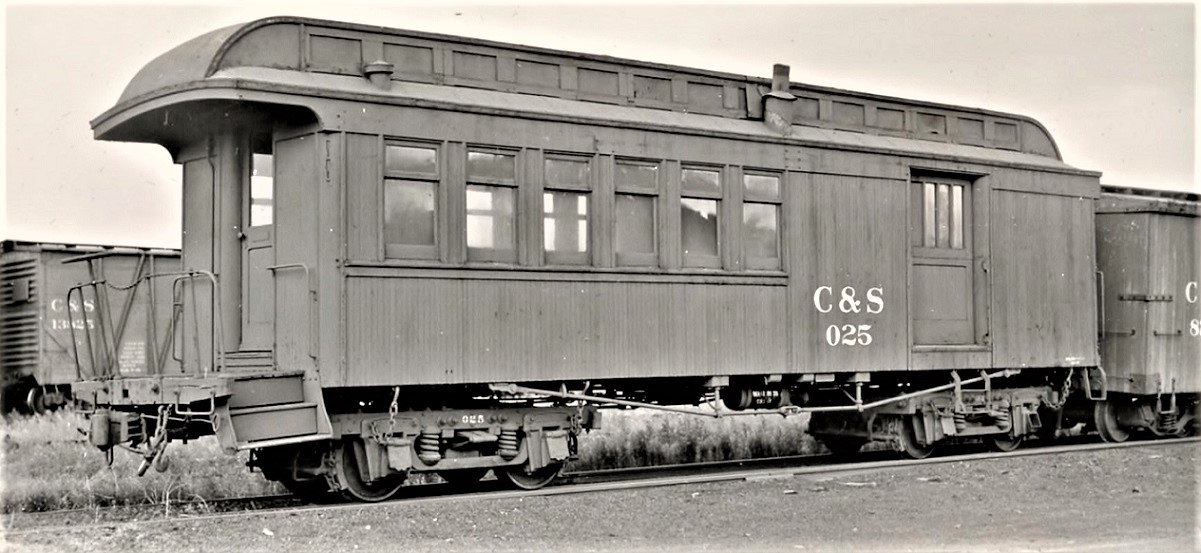 Richard B. Jackson photo Yep, not much happening at Roper's Doghouse--the dog days of August I guess. No C&S model building at my house either, until our summer guests leave for home next week. I did order and received Roy Stevens new Sn3 C&S combine 20 resin print;  https://www.ebay.com/itm/305027781972?hash=item4705129554:g:eNcAAOSwD81krV6Y&amdata=enc%3AAQAIAAAAwGMegzKvJrkUQXpMq5TMlubwzEqN4%2F7bKkL9D%2BwiQpEggI0ehbSxQK5XITHOmzCC77P0%2BP6P6Kv5KSTZ6Ibb0OJgMG3xxYIib40cUPrjCjyCmghCv%2BFApKq1IEnACCg3k%2B7Du8CVkEexQ5eHDb0nS9Pa8uwRlO8bvRytgITTsxn1QN77kwXFpMd1CErd6VGlpJokxTYYa9sq8TkezGtyQE%2F%2BArZVC8K3jjAuafgaRmkW%2BZ6Q%2BV3ie5HRlN840QLlKw%3D%3D%7Ctkp%3ABk9SR-iHkcC9Yg It is another fine print. I plan to build it up as I have been C&S RPO/coach 43, but paint it red as C&S MOW combine 025. I visited Roy's eBay listings today and found that Roy has sold 7 Sn3 prints of C&S 20, as well as 7 HOn3 prints of the little combine. So, fourteen of us now own one of Roy's prints and presumably intend to build them up, paint and operate them. It seemed like a good idea to open this thread, to share photos, drawings and construction techniques in our collective effort to build the resin kits. History: The car that was to become C&S 20 was built by the Colorado Central in their Golden shops in 1878, numbered CC number 6: 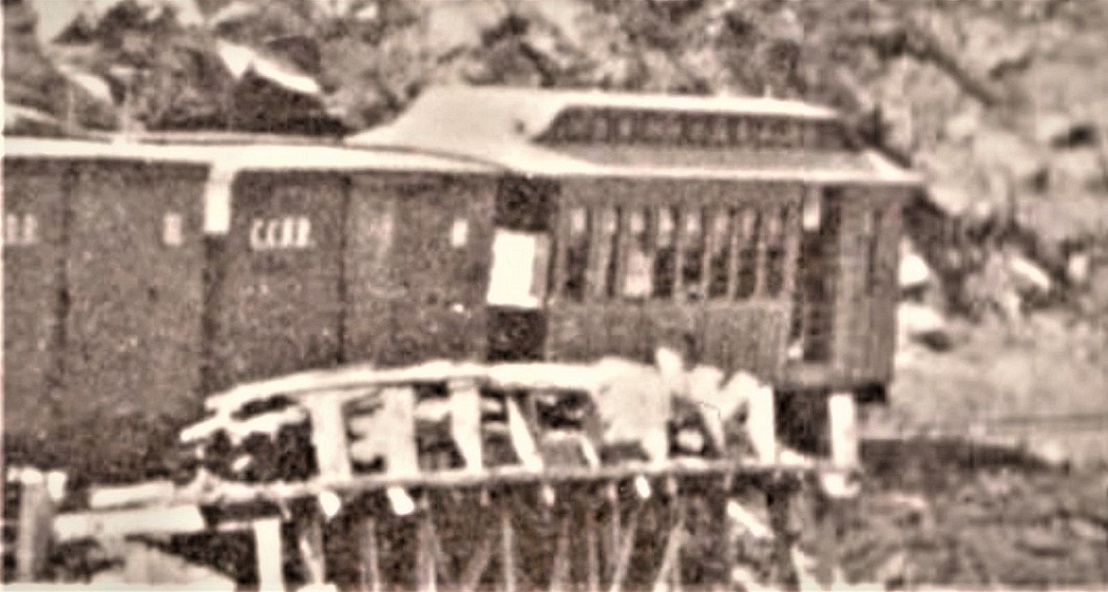 Alex Martin photo at Beaver Brook. DPL Z-3386. This is the only 19th century photo that I've found of our little combine as built--perhaps Chris or Todd have others they can share. As built, CC 6 had a duck-bill roof and more side windows, including windows in the baggage compartment. With the reorganization and receivership, CC 6 was renumbered UPD&G 736, then later UPD&G 46. With the creation of the C&S in 1899, the car was numbered C&S 121. The camera shy combine evidently spent a bit of time in the first decade on the Gunnison division, tacked onto the end of freights over Alpine Pass:  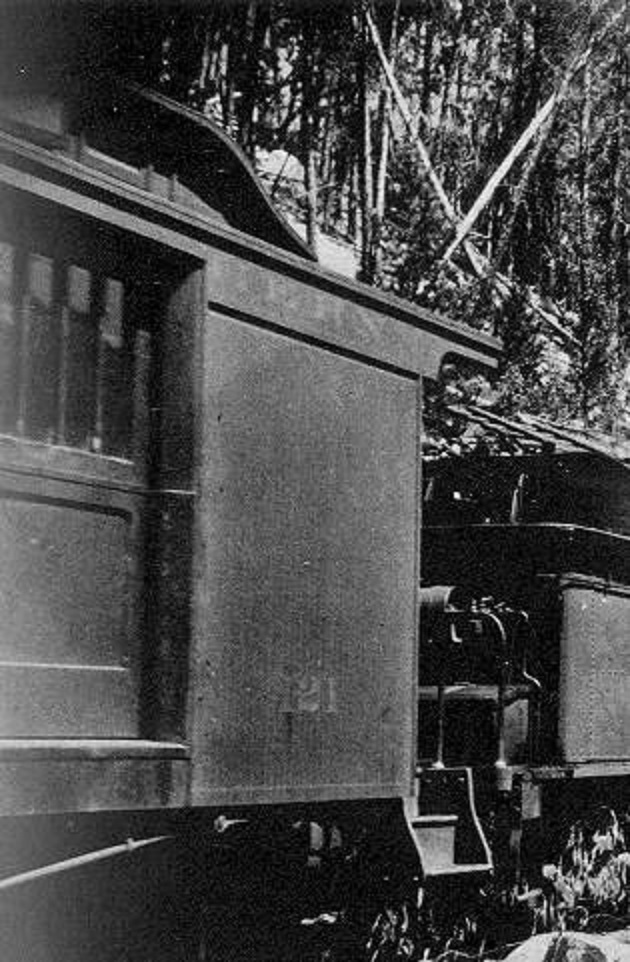
This is the only photo of which I'm aware that actually shows C&S 121/20 in revenue service. Taken about 1905 on the rear of a freight climbing the west side of Alpine Pass, near Midway Tank. The car still has its duck-bill roof, but has lost its baggage compartment window. By late 1906, C&S combine 121 had been renumbered to the now famous C&S 20. The subsequent doings of combine 20 are pretty much a mystery. At some point it had its baggage end platform and roof overhang removed with the roof reconfigured to a bull-nose shape, as in the Folio 24 drawing from 1918: 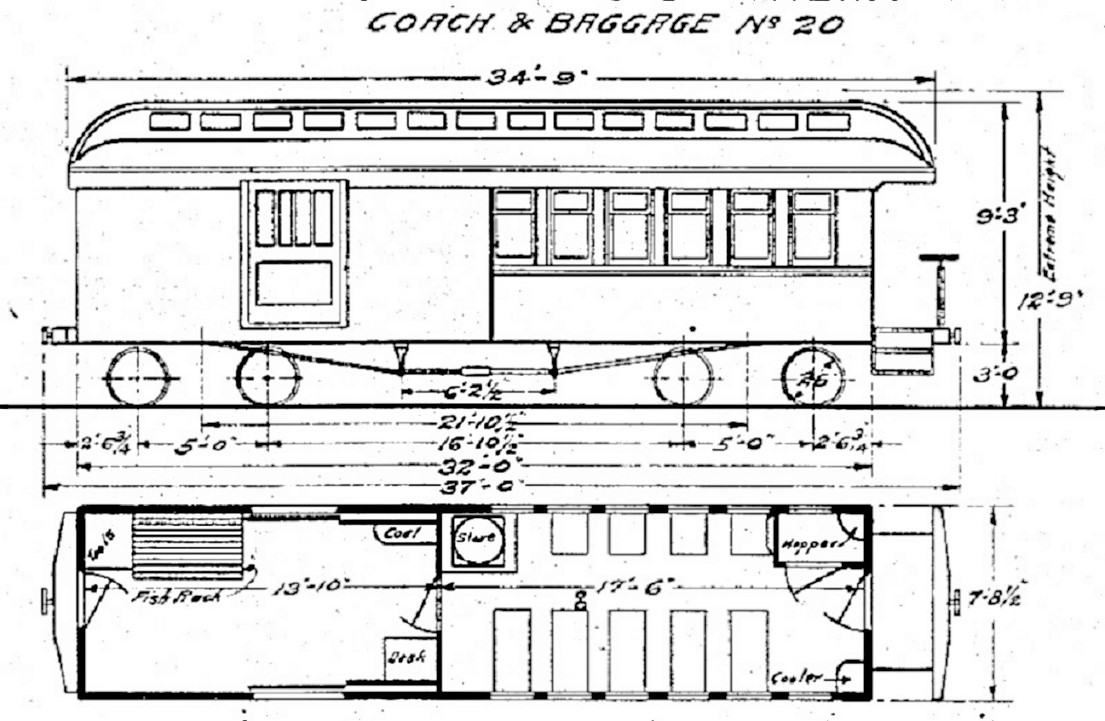 My copy of Folio 24, corrected to 10-1923, doesn't have a folio drawing for combine 20, although it is still listed in the roster. This might imply that C&S 20 didn't see any use in train service after WWI, probably sitting on a weed grown track in the Denver Coach Yard. But in February of 1925 combine 20 was refurbished a bit, painted red and re-lettered for MOW service as C&S 025. It is my understanding that 025 was assigned to the wreck train, to transport members of the wrecking crew to the latest location of C&S narrow gauge misfortune. After a 33 year hiatus, photos of combine again turn up, this time as C&S 025: 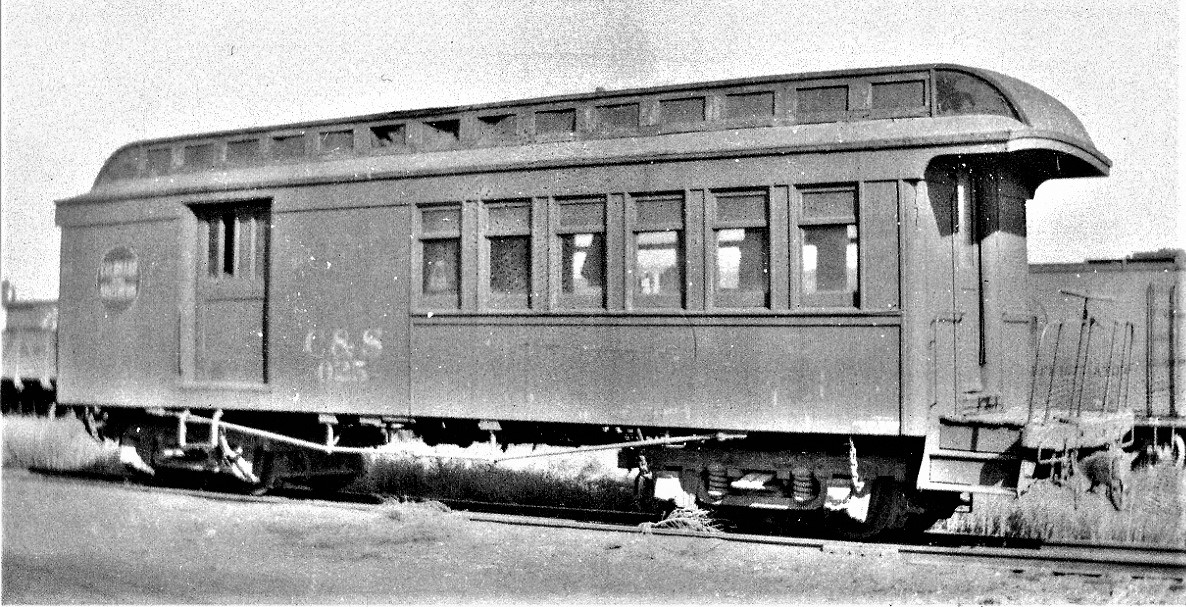 June, 1938 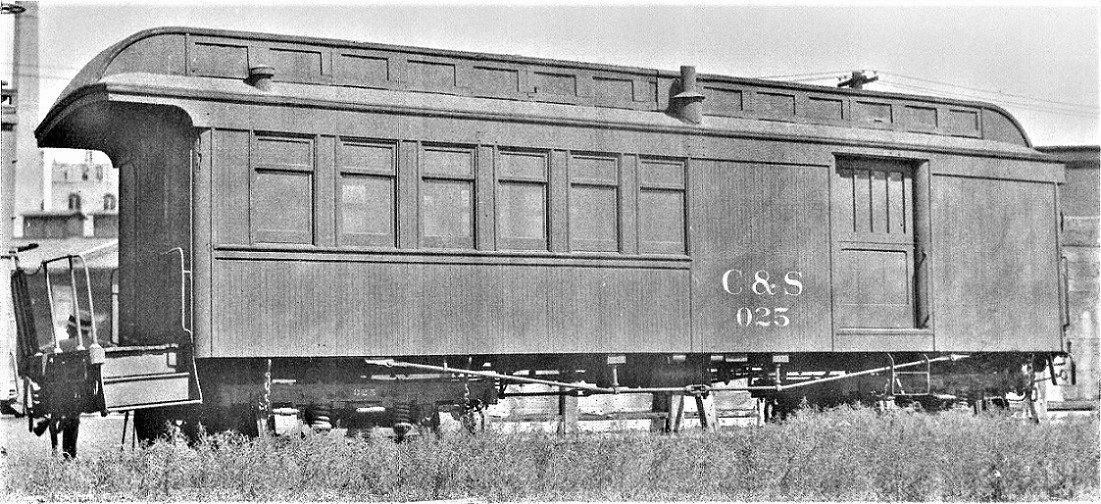 July, 1938 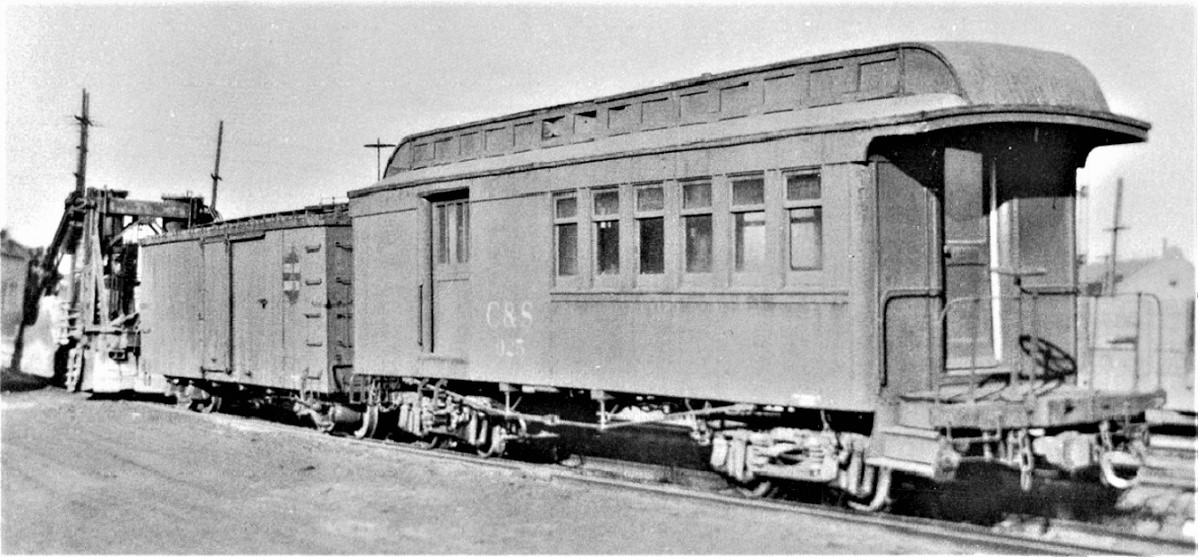 April, 1940 In April of 1941, C&S 025 was refurbished, re-lettered for C&S 20 in dark green paint with pre-WWI lettering that included the Adams Express Company lettering. The C&S donated the car to the Central City Opera House Association, along with C&S locomotive 71 and the phase 1 coal car. It has been in Central City since. 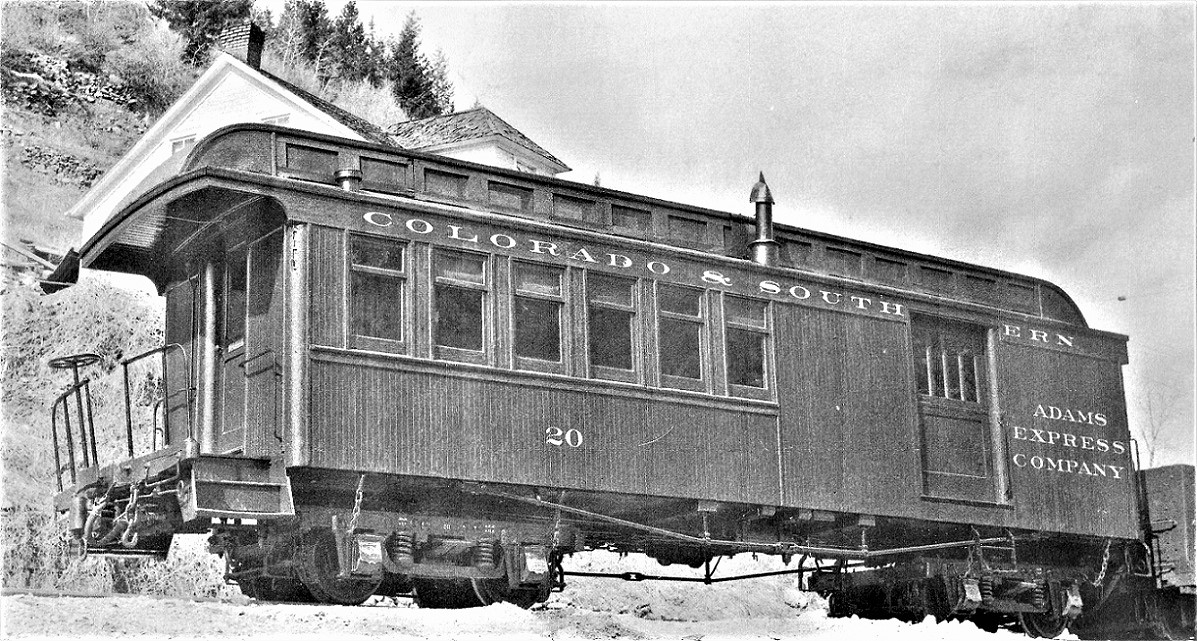 Richard Kindig photo, Blackhawk, April, 1941 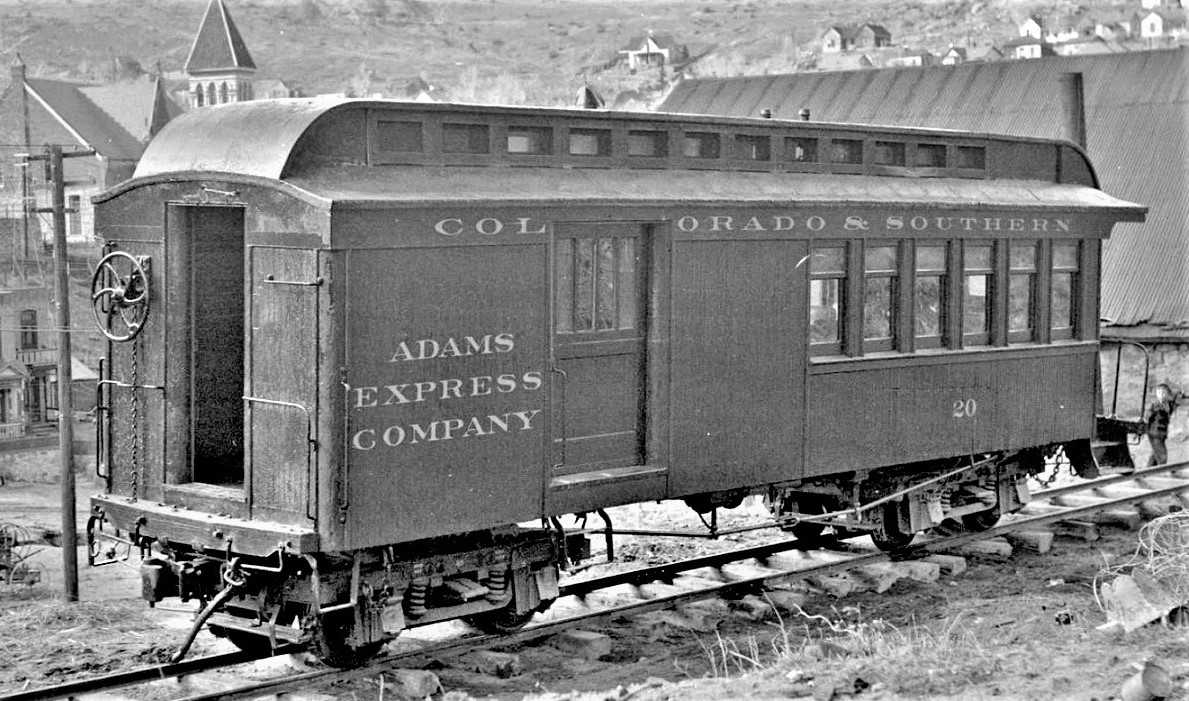 Otto Perry photo, Central City, April, 1941. DPL OP-6370. 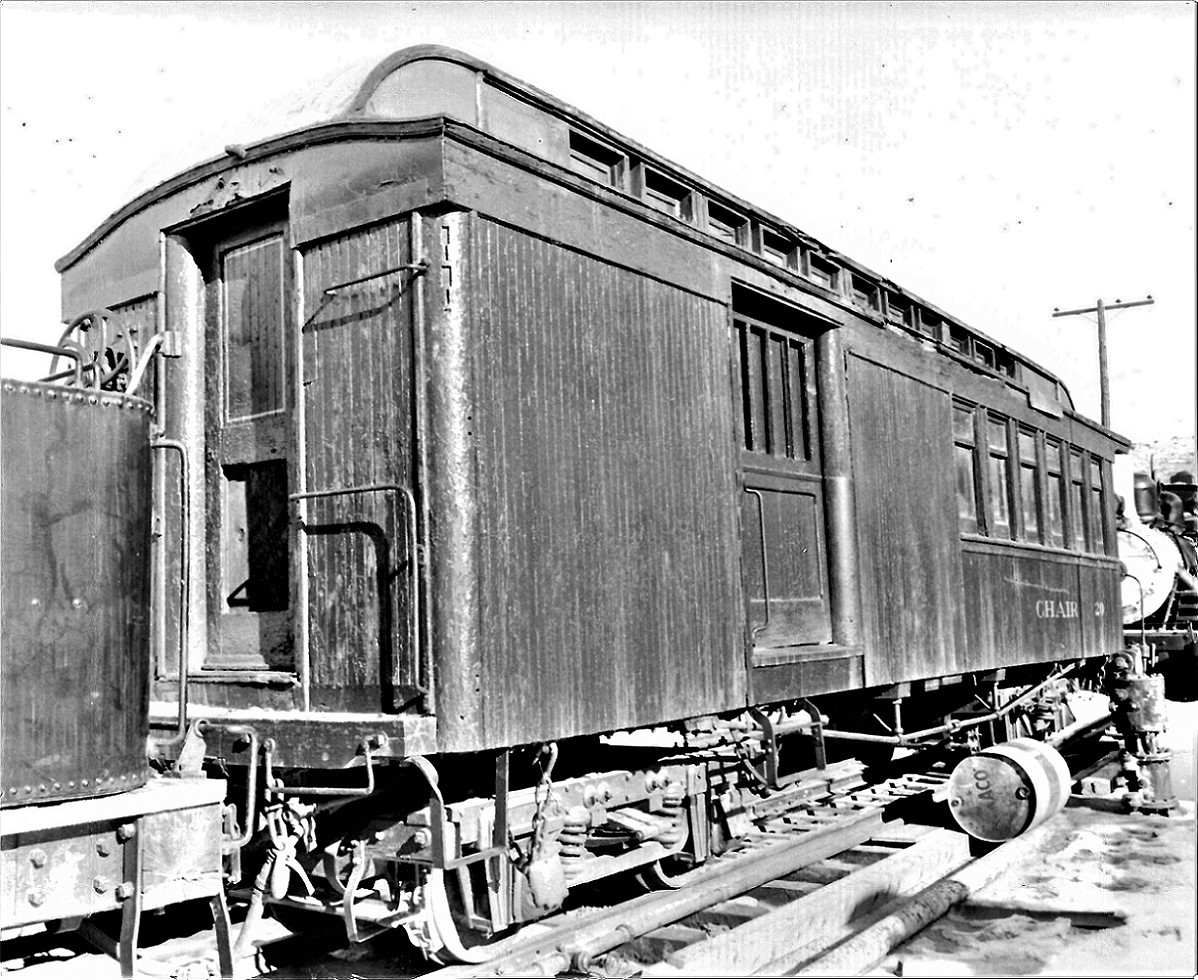 James Courtney photo, February 1973. I am told that John Maxwell offered plans for C&S combine 20, though I have never owned or seen them. Harry Brunk did a set of "sketch plans" for C&S 20 in his "Up Clear Creek" series in the Gazette: 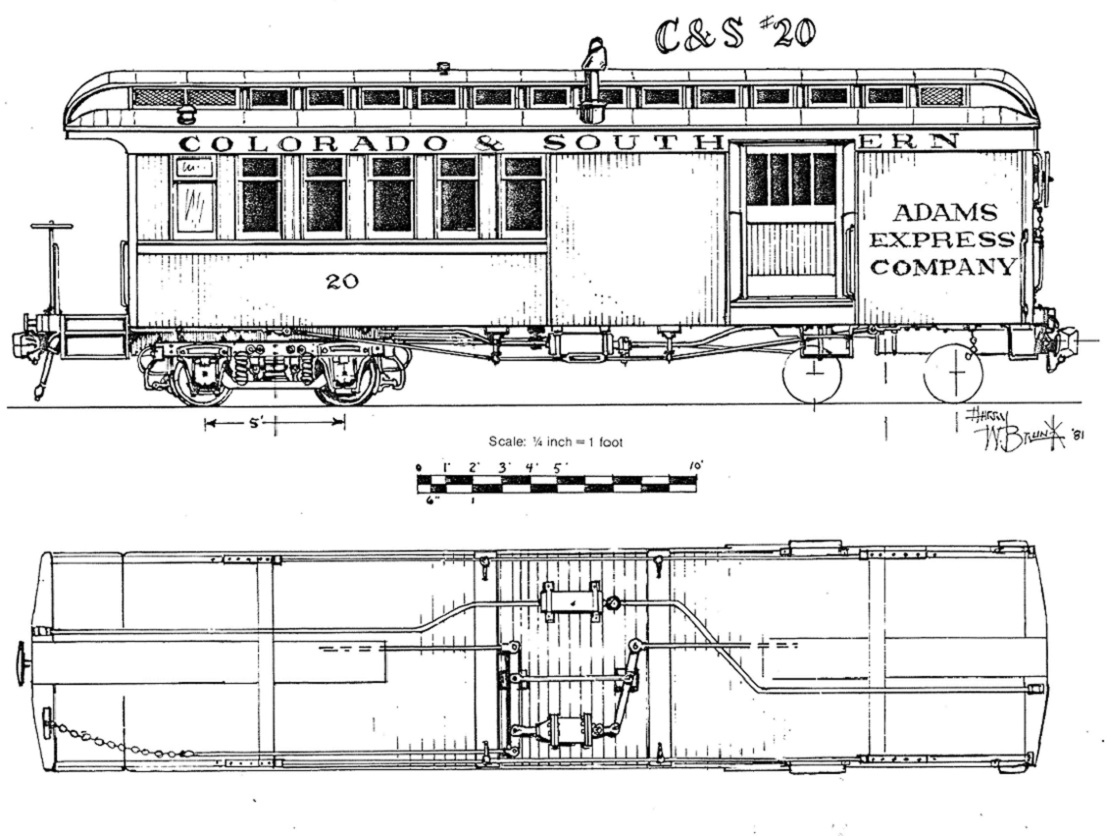 As for interior details, our own Kurt Maechner posted this color photo on his C&S blog: 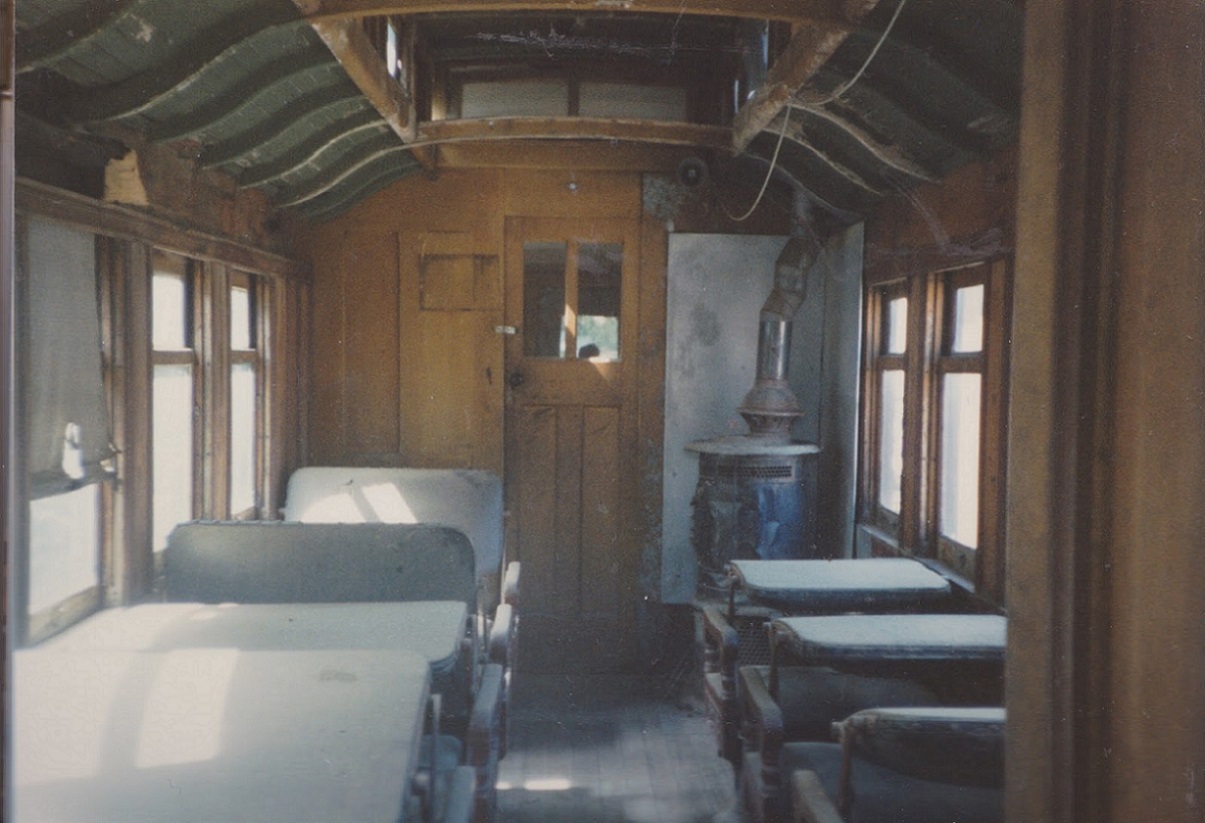 Wood work is a medium brown and the seat cushions appear to be a faded green fabric (unless they were recovered in a newer material after the 1941 exhibition placement). So, that's the sum total of my info on C&S combine 20 / MOW 025. I welcome any corrections of misstatements and any other info or photos that will help us all build better models of this car. I'm looking forward to starting this project, but C&S RPO/Coach 43 needs to be finished first . . .
Jim Courtney
Poulsbo, WA |
|
Thanks for a very thorough illustrative post on this car, Jim.
I thought about getting one of these models but decided against it as I have far too many models as it is. (Sorry, Roy). It is interesting that in 1938 the car had the circular trademark on one side, but lacked it on the opposite side. As with many of the rail vehicles that survive, I wonder if 20 is also the victim of accident: it survived in tact in MOW service and was in reasonably good shape and the smallest surviving passenger car when Central City came calling?
Keith Hayes
Leadville in Sn3 |
Keith I'm with you on the too many models- in HOn3 I have an old Laconia (I think- might be Binkley) combine that I had cut down the baggage end roof in HOn3- to be a pseudo-20- It is a little short and missing a window. I have been considering one of his RPO combines but I have two Labelle's combines in my stash- My plan had been one regular combine and the other kitbashed to an RPO combine. Then that one came out and it is tempting me. I guess one could ask the question can one ever have too many models????? Hi My name is Jim (Hi Jim) and I have a train problem.......
Jim Curran
|
Re: C&S MOW Combine 025 in C&Sn3
|
In reply to this post by Keith Hayes
When putting together the intro post to this thread, I forgot to pose a question that is bugging me.
Consider Harry Brunk's the underfloor drawing of combine 20, specifically the brake rigging:  Does that look like the brake rigging of any passenger car that we've seen? I can understand the solitary air trainline pipe, as most of the combines were attached to the rear of a freight train. They likely never had or needed a separate air signal line like on their mainline cousins. But the brake lever and rod/chain arrangement looks like that of a freight car! The main brake lever off the left side of the cylinder's piston is longer than usual and has a rod attached that runs all the way leftward to the brake staff and chain at the coach platform end beam. The lever on the right, the attachment to the back of the cylinder acting as a fulcrum, only has a brake rod running to the right, baggage end truck. That would probably be sufficient, as the car was only 5' longer over the end sills than a SUF boxcar. The brake rigging as drawn functions exactly like that of a modern C&S freight car. So what is the point of the big 24" brake wheel on the baggage end, with its chain running down through the baggage end end beam? How is it attached to the rest of the brake rigging system? Did it attach by chain or rod directly to a lever on the brake beam of the baggage end truck, like on the freight cars of the 1870s-early 1880s, before air brakes were introduced? Each end of the car having a brake wheel/staff attached to only the truck at that end of the car? I'm use to passenger car brake rigging as some permutation of this:  Orange is levers/fulcrums, red is brake rods/chains, green are safety rails (to prevent brake levers/rods from falling down onto the track should something break). The air brake rigging has its own system of levers and rods (central levers attached to the brake cylinder and secondary levers, supported by a fulcrum, closer to the trucks). The secondary levers linked the rods to each truck. The hand brake system was separate, each brake wheel/staff attached by chain/rods to their own levers. The hand brake levers were in turn connected by a long rod in the centerline of the car. The two systems were connected only with a few links of chain near the trucks (blue in the above drawing). This is the system that I modeled on my RPO/coach, following Pullman drawings: 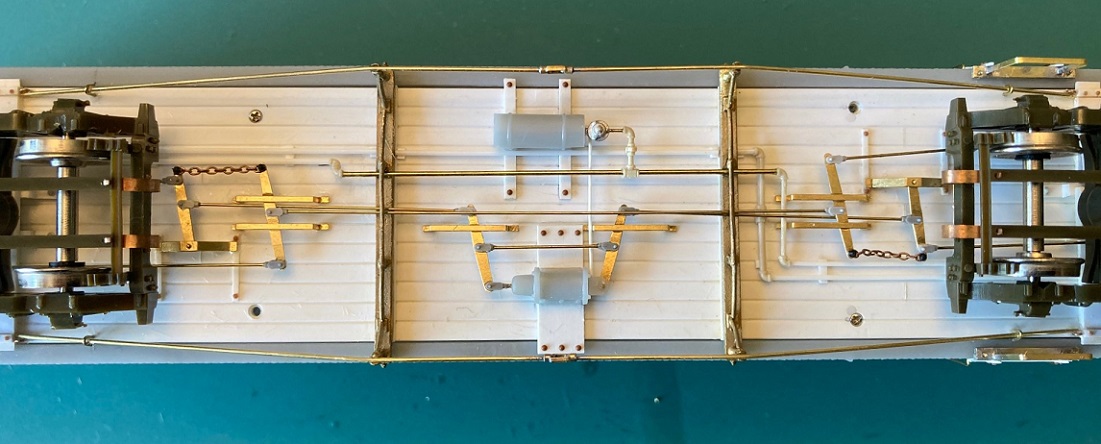 So, did Harry simply get it wrong, or Was the brake rigging initially like that of a passenger car and later simplified to that more like a freight car? If so, when was this done? When the combine was converted to MOW service in 1925? When shopped prior to display at Central City? Or was the car's brake rigging always like this. After all the little combines were basically cabooses in branch line mixed train service. Looking at the photos that I posted, I can't make out any evidence of the brake rigging as Harry drew it. I wish I had explored the little car at my 1973 visit and taken more photos, but I was pressed for time and had much more of Clear Creek to see. Since combine 20 has been sitting in Central City for 80+ years, has anyone here taken photos of the underside of the car that might clarify these questions? Specifically, to what was the long chain from the big brake wheel on the baggage end attached?  ____________________________ PS: Jim, model trains are not prunes -- it is impossible to have too many. 
Jim Courtney
Poulsbo, WA |
Re: C&S MOW Combine 025 in C&Sn3
|
In reply to this post by Jim Courtney
Jim,
hopefully Todd will dig out his fabulous picture of #6 http://c-sng-discussion-forum.254.s1.nabble.com/Proof-that-not-only-the-Eating-House-was-built-on-stilts-at-Forks-Creek-tp948p1050.html There are several in the DPL on the Switchbacks. Z-4679 Z-3388 Z-3406  The only one I have.... 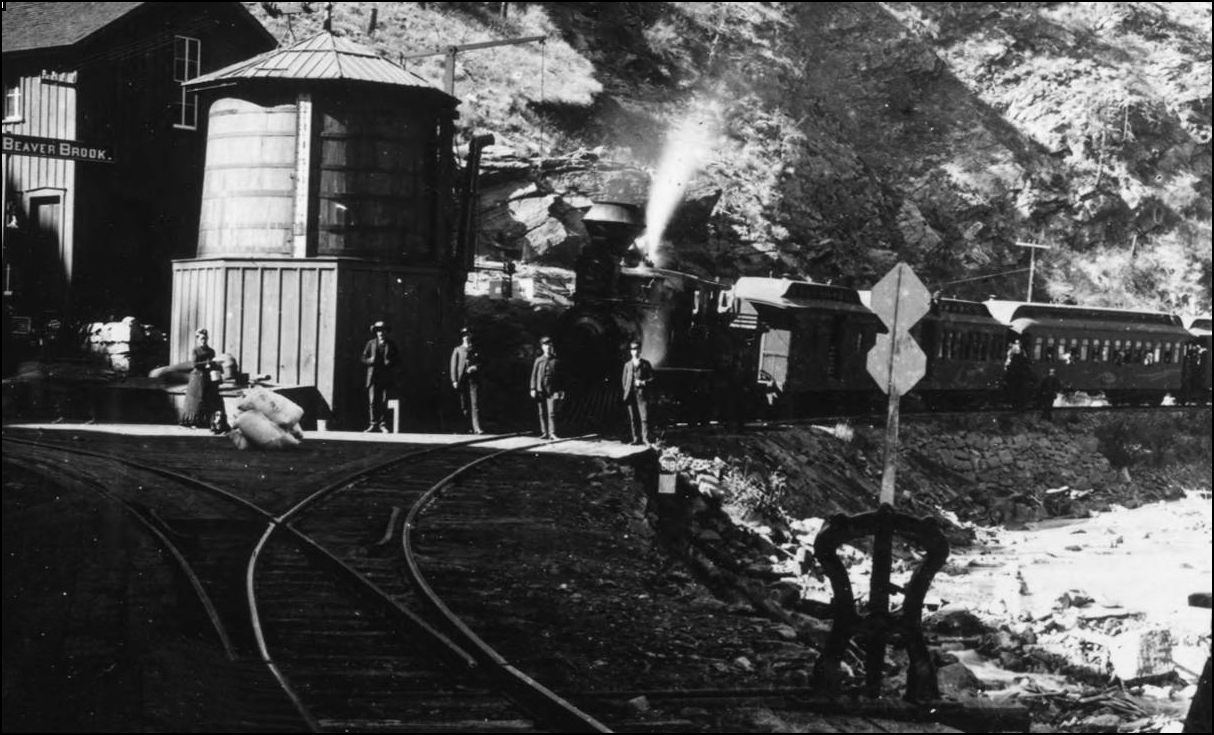
UpSideDownC
in New Zealand |
Re: C&S MOW Combine 025 in C&Sn3
Which photo are you talking about. If it's this one, it's from Wikimedia Commons, not my collection. 
|
Re: C&S MOW Combine 025 in C&Sn3
|
In reply to this post by Jim Courtney
Is this it? 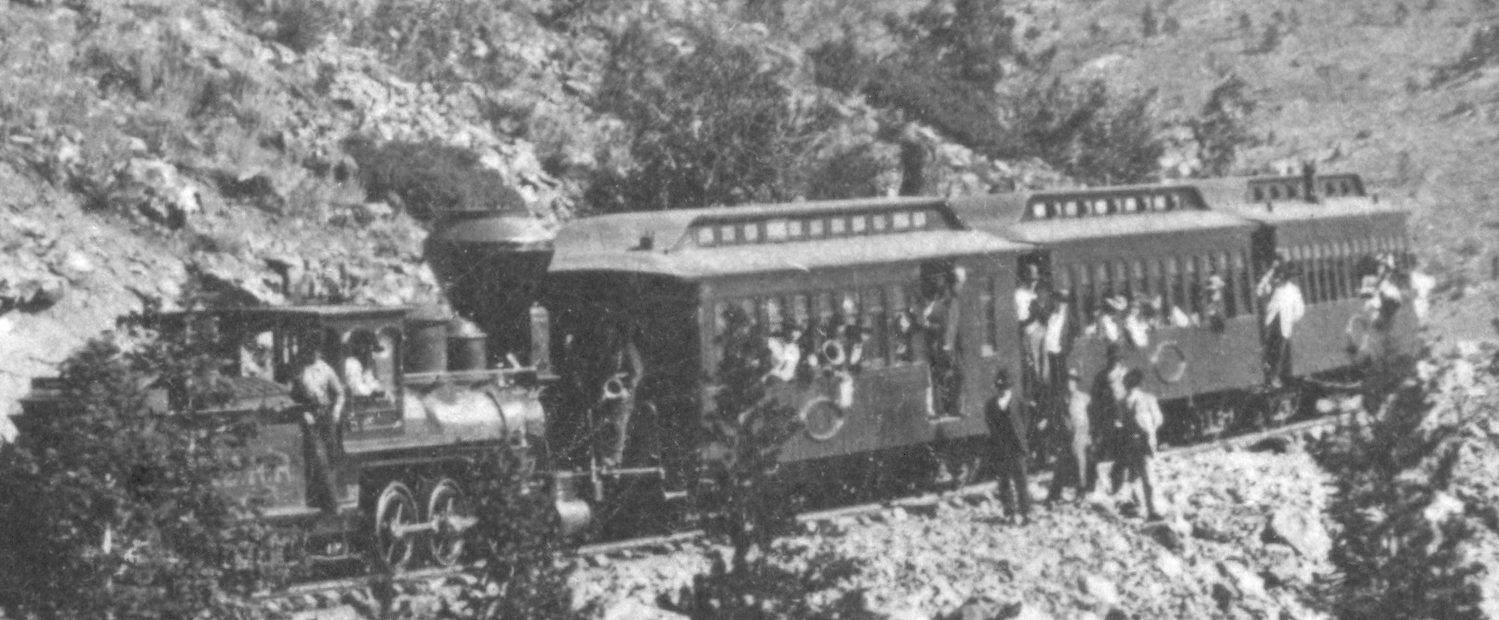
|
Re: C&S MOW Combine 025 in C&Sn3
|
In reply to this post by Todd Hackett
Yes that's the one Todd. I missed the attribution, for some reason?
The CC only had two; the #5 had the Bullnose roof. 
UpSideDownC
in New Zealand |
Re: C&S MOW Combine 025 in C&Sn3 AND On3
|
Administrator
|
In reply to this post by Jim Courtney
I read this post back in August, but went back to it last night when I became aware (thanks, Will) that it is also being produced in On3.
As my perpetual calendar in Dickey is 1935, this will be built as #025 in red. I'll be very glad to be able to add this little guy to my roster and will use this post to help guide me through the construction. Thanks for the effort on the content, Jim, and thanks to Ride Trains for making it available. You can order it through their website. Apparently one of the bodys was displayed at the Convention. Just thought it was with mentioning. |
|
This post was updated on .
In reply to this post by Jim Courtney
Good job Jim,
Very thorough. One small correction. The seats were not green, it's the way the light hits them. The Seats in the 025/20 were done in Black Pantesote (like a heavy duty oilcloth/naugahyde combo). Notice that they are set up in a 2-1 configuration. The interior, before any "restoration" was Oak panels with red cherry (or Mahogany) accents. the color below the interior belt rail was painted in a boxcar red color. I don't know if this was done during the MOW days or not. The paint below the belt rail was actually varnished. Also the seat ends, during the MOW days were painted boxcar red over the varnished white oak. The baggage end was painted a light yellow, kind of a yellowish beige or Buff color. I only remember because it was "Home" for me during one of the seasons up in Central City. We had a bed set up in the baggage end. Rick |
|
In reply to this post by Keith Hayes
Keith Hayes wrote:
It is interesting that in 1938 the car had the circular trademark on one side, but lacked it on the opposite side. As with many of the rail vehicles that survive, I wonder if 20 is also the victim of accident: it survived in tact in MOW service and was in reasonably good shape and the smallest surviving passenger car when Central City came calling? -------------------------------------------------------------------------------------------------------------------------------------------------------- I want you to think about the heritage of the equipment that the C&S donated to Central City. The 71 was originally UPD&G no. 9, built for the Clear Creek lines. The Gon represented the hundreds of shipments of ore and concentrate going to the mills for final processing. The 20/025 was the last Colorado Central car left on the C&S. Somebody on the C&S had their head cut in and did some research on the heritage of the equipment to be donated. It is too cohesive to be a mistake. As far as the circular trademark goes... The photos were taken on different days. Don't discount that there wasn't a circular trademark on the other side... I found remnants of it when scraping the car down in 1970. It might have been painted over, why? I don't have the slightest idea. Also, If you will look closely you will notice that the end platform is leaning out in the 1938 photos. The end sill was severely cracked while in MOW service in Leadville. It cracked the main sills under the platform as well. Rick |
Re: C&S MOW Combine 025 in C&Sn3
|
You know, I'd almost forgotten that this car also had the distinction of being the first passenger car used on the GSL&P, during 1884/1885.
I love the car in its later years, thanks to Brunk's article introducing it to me so long ago. But I really love it best in its original form--sorry C&S fans--I just do. Detail of the car at Sunset ca 1884/1885, DPL X-13748. https://digital.denverlibrary.org/digital/collection/p15330coll22/id/12783/rec/1 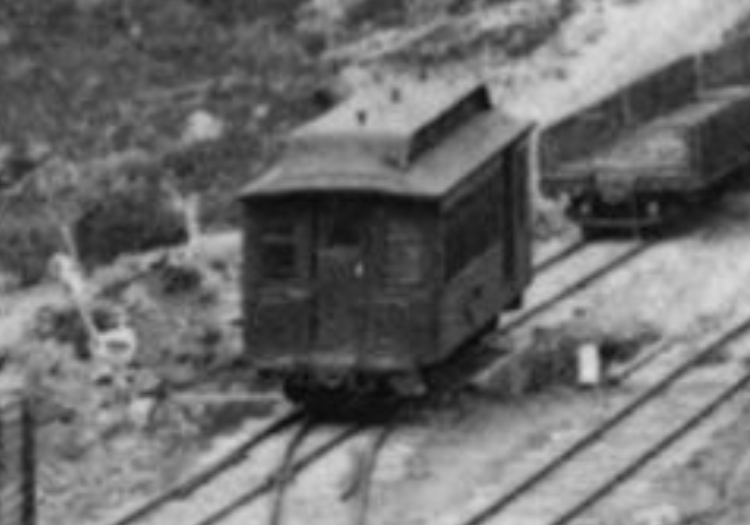
Dave Eggleston
Seattle, WA |
Re: C&S MOW Combine 025 in C&Sn3
|
In reply to this post by Rick Steele
Rick,
Thanks so much for all the detailed notes as to the interior of C&S combine 20/MOW 25. Very helpful to me. As you probably know more about the little passenger car than anyone here, can you shed some insight on the questions about the brake rigging that I posted upthread? Was the brake rigging as Harry drew it in his Gazette plans? If so, how did the chain from the big brake wheel on the baggage end connect to the levers? Jim
Jim Courtney
Poulsbo, WA |
|
In reply to this post by Rick Steele
Rick, I want to second Jim's thanks for your insight.
I may be making this up, but railfans seem to be of the opinion that corporate railroaders don't care about trains. While this was manifested in the efforts to dispose of the narrow gauge feeders, it does not mean that there were not caring and thoughtful individuals on the team who worked with the equipment and knew of the heritage. This was very obvious when we compiled the National Landmark nomination for the C&TS. Folks in Denver and Alamosa took great care in creating the list of equipment to convey to the States, and they took a Noah's Ark approach, providing at least one good example of everything on the property. They also thought to convey a bunch of parts that most would consider junk, but in fact have been used to keep the railroad operating. Your comments also reinforce the notion that I have been nursing that the Clear Creek and South Park operations were distinct. Those not familiar can squint and see the same-looking trains, yet the equipment, crews and operations were different with only small overlap. My name is Keith, and I am a South Park guy, which is not to say that I don't enjoy reading the discourses on the Clear Creek lines, but rather I probably should not say much because it will likely be incorrect.
Keith Hayes
Leadville in Sn3 |
Re: C&S MOW Combine 025 in C&Sn3
|
In reply to this post by Jim Courtney
Jim, thank you very much for very informative build of the RPO #43 and now you build of the #25. I am currently building Roy's kit for the #25 in On30. I am uncertain of the brake rigging for the #25. It would be very helpful if you could post a picture of how you did the brake rigging on your #25.
Again, thank you for your very informative presentation of your fine work. Will Cheshire |
Re: C&S MOW Combine 025 in C&Sn3
|
Hey Will,
As to brake rigging, I haven't gotten that far on my Sn3 print of Roy's C&S 20/025. I, too, am uncertain of how the brake rigging looked in actual revenue and MOW use. See my August 13th post (up thread). I question whether Harry Brunk's drawing of the brake rigging was accurate. It may have been the final arrangement prior to display at Central City (the little combine only had to be moved from Denver to Blackhawk once). I will likely do the brake rigging like I did on the RPO/Coach 43 project (photo also in the August 13th post). I was hoping that Rick Steele might offer more info on the cars brake rigging. Harry Brunk's scheme has no connection for the big brake wheel's chain. Anyone else have info?
Jim Courtney
Poulsbo, WA |
«
Return to C&Sng Discussion Forum
|
1 view|%1 views
| Free forum by Nabble | Edit this page |

